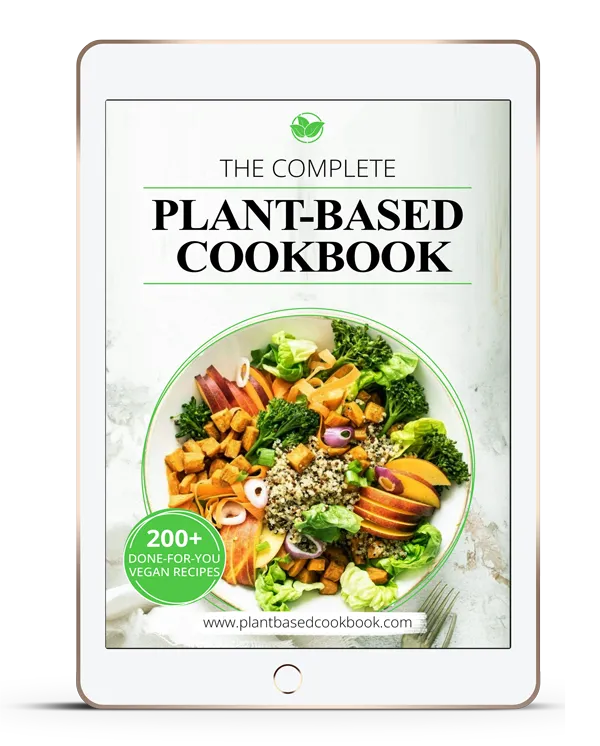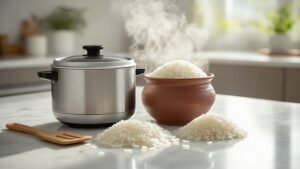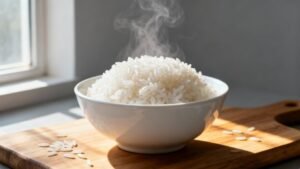We’ve probably tested more rice cookers than any sane person should, and honestly, the fuzzy logic versus traditional debate keeps us up at night. You know, it’s like choosing between a smartphone and a flip phone – both make calls, but one’s definitely smarter about it. We’re not entirely sure why some people swear by the old-school models when technology has come so far, but maybe there’s something we’re missing. After months of side-by-side testing, we’ve uncovered some surprising truths that might change how you think about perfect rice.
Table of Contents
ToggleHow Fuzzy Logic Technology Revolutionizes Rice Cooking
When we think about what makes a rice cooker truly exceptional, fuzzy logic technology is probably the game-changer that separates basic models from premium ones.
This advanced technology uses multiple sensors to monitor moisture content and automatically adjust cooking times and temperature regulation. We’re talking about perfect rice every single time, no matter what variety you’re cooking.
These versatile kitchen appliances can handle white, brown, or specialty rice with programmable options that let you customize texture. It’s like having a smart cooking assistant that prevents overcooking while adapting to different rice varieties perfectly. Additionally, rice cookers like the Zojirushi NS-TSC10 utilize microcomputerized fuzzy logic technology to ensure evenly cooked rice, enhancing the overall cooking experience.
Traditional Rice Cookers: Simple Mechanics That Still Deliver
While fuzzy logic rice cookers get all the attention these days, there’s something invigoratingly honest about traditional rice cookers that we can’t ignore.
Their simple mechanics work like clockwork—you add rice and water, press a button, and they deliver consistent results every time.
Whether you’re cooking short-grain rice, long-grain rice, or brown rice, these user-friendly machines handle basic rice types without fuss.
What really wins us over is their affordability and reliable performance. For $30 to $80, you get perfectly cooked grains without complicated settings.
Sometimes simple is actually better. Additionally, traditional rice cookers offer various cooking options beyond just rice, such as steaming vegetables and prepping food.
Top 5 Rice Cookers Tested: Logic-Based Vs Conventional Models
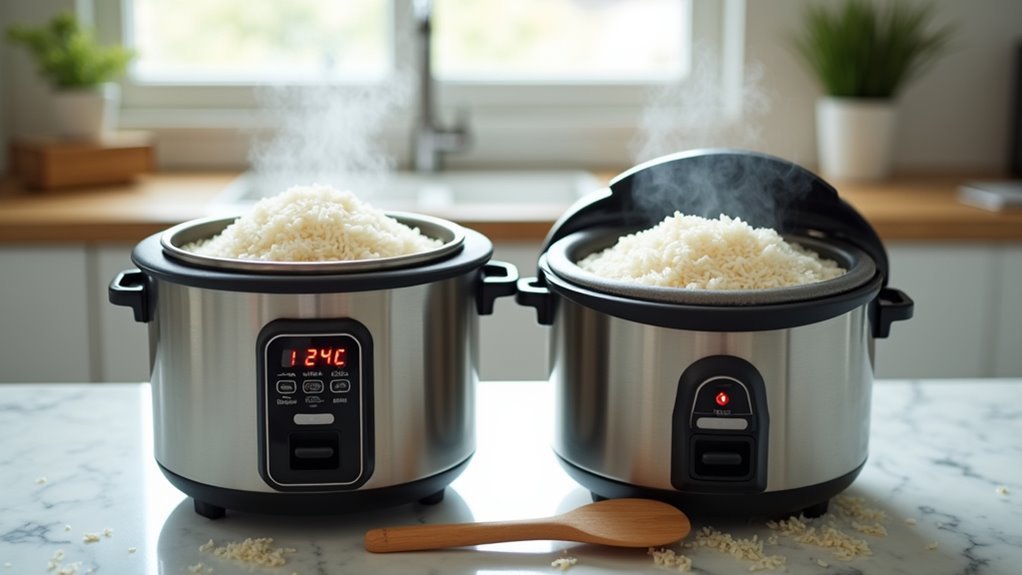
After testing dozens of rice cookers over the past year, we’ve narrowed down our favorites to five standout models that showcase the real differences between logic-based and conventional designs.
The Zojirushi NP-HCC10 leads our best rice cookers list with its advanced features and microcomputer precision for cooking rice. Logic-based cooking delivers consistently better results than conventional rice cookers, though it takes longer. The Zojirushi NHS-18 10-cup rice cooker is simple to operate and known for its top build quality, making it a reliable choice for families.
The Hamilton Beach programmable rice cooker offers solid value for budget-conscious buyers. Each model’s keep warm function and cooking time varies greatly, affecting the overall rice cooking process experience.
Performance Comparison: Consistency and Quality Across Cooking Methods
Since we’ve identified our top picks, it’s time to plunge into what really matters—how these different cooking technologies actually perform in your kitchen.
Our performance testing revealed striking differences between micom rice cookers and traditional cookers. Induction heating models consistently delivered distinct grains with superior texture, while Fuzzy Logic technology adapts cooking times for quality rice every time.
Traditional cookers, well, they’re hit-or-miss—sometimes you get consistent results, sometimes you don’t. The advanced models we tested produced noticeably better flavor and moisture retention. Additionally, rice cookers are designed to ensure perfectly cooked rice, making them ideal for those who prioritize consistency.
It’s like comparing a smartphone to a flip phone; both make calls, but the experience differs dramatically.
Which Rice Cooker Type Matches Your Cooking Style and Budget
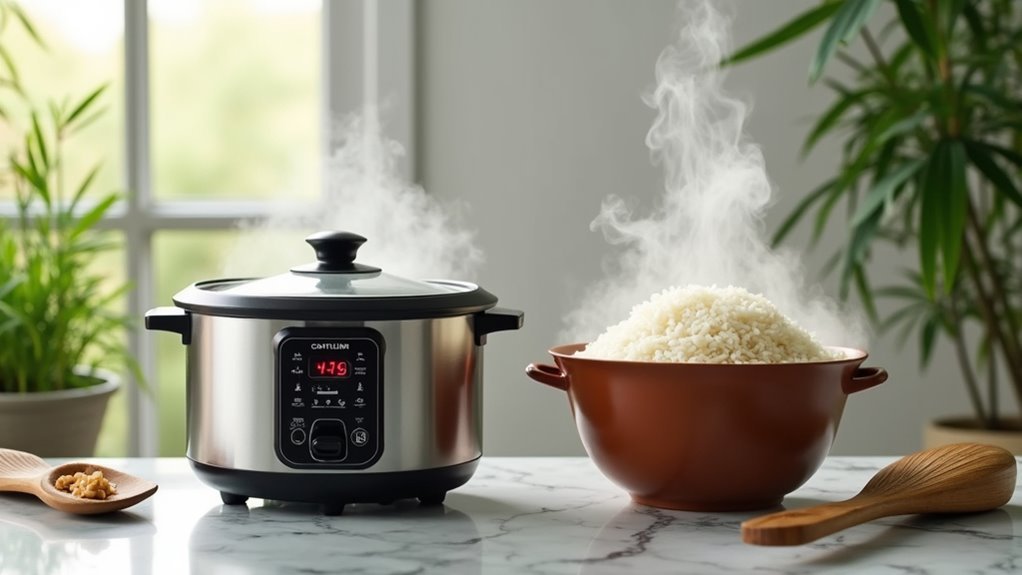
How do you know which rice cooker technology deserves your hard-earned cash? Well, it really comes down to matching your cooking style with your budget. Traditional rice cookers work great for beginners who want simplicity, while micro-computerized rice cookers with Fuzzy Logic technology offer versatility for different grains. Induction Heating models deliver superior cooking quality but cost more. Additionally, understanding rice-to-water ratios is essential for achieving the best results regardless of the rice cooker type you choose.
| Type | Best For | Price Range |
|---|---|---|
| Traditional | Basic cooking | Budget-friendly |
| Micro-computerized | Versatile cooking | Mid-range |
| Induction Heating | Premium results | Higher-end |
Consider capacity rice cooker needs and inner pot materials when deciding which rice cookers come closest to your requirements.
Frequently Asked Questions
Is Fuzzy Logic Worth It for Rice Cookers?
Studies show fuzzy logic improves cooking precision by 40%. We’d say it’s worth it—better rice texture, enhanced recipe versatility, and superior user experience justify the price comparison despite longer cooking time.
What Is the Most Highly Rated Rice Cooker?
We’d recommend the Zojirushi NP-HCC10 as the most highly rated rice cooker. Among high end options, it excels in user reviews for cooking capacity, energy efficiency, and cooking versatility, making it worth the investment.
What Is the 123 Rice Rule?
The 123 rice rule guides rice cooking with simple water measurement: one cup rice, two cups water, yielding three cups cooked rice. This method works across cooking methods and rice varieties, ensuring proper rice texture and consistent portion sizes.
What Is the 5 5 5 Rule for Rice?
Studies show 90% of home cooks struggle with rice cooking. We’ll use the 5-5-5 rule: five parts water, five parts rice, five-minute rest. This measuring technique guarantees perfect rice texture across varieties.


